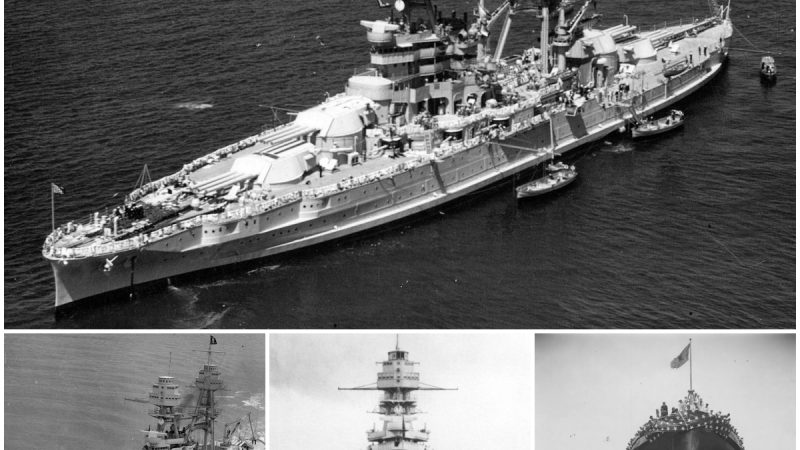Breaking the Sound Barrier: The Iconic SR-71 Blackbird – History’s Fastest Air-Breathing Aircraft
The SR-71 Blackbird, also known as the Habu, is undeniably one of the most legendary and iconic military aircraft of all time. Even 58 years after its invention and 23 years after its official retirement by the U.S. Air Force in 1998 and by NASA the following year, it still holds the title of the world’s fastest air-breathing aircraft.
Designed by the Lockheed Skunk Works division, the SR-71’s roots trace back to a classified project known as the A-12 reconnaissance aircraft. The aircraft’s design was spearheaded by aerospace engineer Clarence “Kelly” Johnson, who incorporated features from the A-12 into the SR-71. Equipped with cutting-edge reconnaissance systems, including signals intelligence sensors, side-looking radar, and cameras, the SR-71 made its maiden flight on December 22, 1964.
Throughout its service life, the SR-71 achieved remarkable feats that solidified its legendary status. Notably, test pilot Jim Eastham managed to push the aircraft to a speed of Mach 3.56, or just under 2,400 mph, for approximately 15 seconds during a dive. In July 1976, the SR-71 set world records, including an absolute speed record of 2,193.167 mph and an absolute altitude record of 85,068.997 feet.
The aircraft’s astonishing capabilities were showcased again on March 7, 1990, when a crew piloted by then-Lt. Col. Raymond E. Yeilding and Lt. Col. Joseph T. Vida flew from the West Coast of the United States to the East Coast, covering a mind-blowing distance of 2,404 miles in just 68 minutes and 17 seconds.
The SR-71’s unparalleled speed allowed it to outpace even the formidable Soviet MiG-25 interceptor, demonstrating its superiority in the realm of aerial reconnaissance. Despite its incredible achievements, the SR-71 never engaged in combat action and remarkably remained unscathed, earning it a reputation as an elusive and virtually invulnerable spy plane.
Tragedy struck on January 25, 1966, when the aircraft experienced a mid-air breakup due to a severe case of engine un-start, resulting in the loss of Reconnaissance Systems Officer (RSO) Jim Zwayer. Out of a total of 32 SR-71s built, 12 were lost in accidents, but only one fatality occurred.
The final retirement of the SR-71 left a void in the U.S.’s reconnaissance capabilities. While satellites offered an alternative, they were slower to respond to specific demands. The aircraft’s successor remains a subject of speculation, ranging from the rumored Aurora project to the SR-72. The latter is said to be pursued by the U.S. Air Force to continue the SR-71’s legacy in strategic intelligence, surveillance, and reconnaissance (ISR) roles.
Despite the SR-71’s retirement, its legacy endures. The aircraft’s unparalleled speed, remarkable achievements, and iconic design have left an indelible mark on the history of aviation and military technology. The SR-71 Blackbird remains a symbol of innovation, engineering prowess, and the pursuit of excellence in the field of aviation.
The successor to the Blackbird is a topic of considerable speculation, ranging from the rumored (and most likely apocryphal) Aurora project to the SR-72 (the latter of which I shall cover in a separate article). Meanwhile, the official story is that the USAF is pursuing the Northrop Grumman RQ-180 UAV to assume the SR-71’s strategic intelligence, surveillance, and reconnaissance (ISR) role.
Additional specifications on the SR-71A:
– Crew: 2; Pilot and reconnaissance systems officer (RSO)
– Length: 107 ft 5 in (32.74 m)
– Wingspan: 55 ft 7 in (16.94 m)
– Height: 18 ft 6 in (5.64 m)
– Wheel Track: 16 ft 8 in (5 m)
– Wheelbase: 37 ft 10 in (12 m)
– Wing Area: 1,800 sq ft (170 sq m)
– Aspect Ratio: 1.7
– Empty Weight: 67,500 lb (30,617 kg)
– Gross Weight: 152,000 lb (68,946 kg)
– Max Takeoff Weight: 172,000 lb (78,018 kg)
– Fuel Capacity: 12,219.2 US gal (10,174.6 imp gal; 46,255 L) in 6 tank groups (9 tanks)
– Powerplant: 2 × Pratt & Whitney J58 (JT11D-20J or JT11D-20K) afterburning turbojets, 25,000 lbf (110 kN) thrust each
SR-71 Engine from Pratt & Whitney J58.
Hits: 1230













